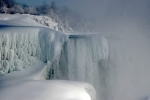Visual exapmples of RERAS
-
rilkeman20
Visual exapmples of RERAS
Since the definiton of a RERA in terms of the actual level of decreased flow isn't stated very concretley by the AASM, does anyone have any visual examples they could share, as to what they would score as a RERA. I get the arousal component fine, but the flow decrease is a bit subjective. Thanks.
Re: Visual exapmples of RERAS
Here's a RERA discussion among sleep techs:
http://binarysleep.com/phpbb2/viewtopic ... 879b704084
There are additional links within that thread...
http://binarysleep.com/phpbb2/viewtopic ... 879b704084
There are additional links within that thread...
Re: Visual exapmples of RERAS
Sounds to me like you get it. Perfectly.rilkeman20 wrote:. . . the flow decrease is a bit subjective. . . .
Re: Visual exapmples of RERAS
I performed a Google search to find a visual example of a RERA in Figure 1 of this white paper:
http://chestjournal.chestpubs.org/conte ... /1519.full
And here's the expanded version of Figure 1 above:
http://chestjournal.chestpubs.org/conte ... .large.jpg
The above RERA (in the left column labeled UARS) is contrasted with an apnea (in the right column labeled OSAS). A thermistor flow channel (the second PSG waveform from top) is not sensitive enough to show the patient flow-limitation/wave-flattening that is associated with a RERA. However, a RERA is comprised of: 1) large respiratory effort to overcome high upper-airway resistance, and 2) a resultant EEG arousal that disturbs sleep. The PES channel measures negative esophageal pressure; and we can see the extreme downward pressure spikes reflecting that large respiratory effort---during 6 consecutive inhalations. The EEG channel, of course, shows the arousal component of a RERA (note the EEG spike just after that 5th inhalation---then a few more EEG sleep-disturbance spikes shortly thereafter).
When labs diagnose RERA's without Pes, then they must look at a more sensitive pneumotach flow channel/sensor (versus a less-sensitive thermistor channel/sensor). They note waveshape flattening or distortions on that pneumotach flow channel; and then they also note an associated EEG arousal as the second necessary component for RERA identification. If the sleep event under question meets the scoring criteria for either an apnea or hypopnea, then the event is not a RERA.
In summary, the labs need only see: 1) Pes spikes or pneumotach wave flattening/distortion indicating increased respiratory effort, and 2) a resulting EEG arousal. Human judgment enters the RERA-scoring process, and there are not rigid flow shape or amplitude-reduction requirements. Additionally, apnea and hypopnea scoring criteria each supersede RERA scoring citeria.
Unfortunately I didn't find any other visual examples of RERAs. But there are plenty of examples of flow limitations (flattening/distortion on the pneumotach flow channel). Pair those observable flow limitations with resultant EEG arousals and you then have score-worthy RERAs.
Here are some PAP manufacturer-provided examples of flow limitations that can be seen on a pneumotach channel/sensor (see the roundness, flatness, peak, and shape diagram examples):
http://www.ezybreath.com.sg/techno/autoalgorithm.html
http://chestjournal.chestpubs.org/conte ... /1519.full
And here's the expanded version of Figure 1 above:
http://chestjournal.chestpubs.org/conte ... .large.jpg
The above RERA (in the left column labeled UARS) is contrasted with an apnea (in the right column labeled OSAS). A thermistor flow channel (the second PSG waveform from top) is not sensitive enough to show the patient flow-limitation/wave-flattening that is associated with a RERA. However, a RERA is comprised of: 1) large respiratory effort to overcome high upper-airway resistance, and 2) a resultant EEG arousal that disturbs sleep. The PES channel measures negative esophageal pressure; and we can see the extreme downward pressure spikes reflecting that large respiratory effort---during 6 consecutive inhalations. The EEG channel, of course, shows the arousal component of a RERA (note the EEG spike just after that 5th inhalation---then a few more EEG sleep-disturbance spikes shortly thereafter).
When labs diagnose RERA's without Pes, then they must look at a more sensitive pneumotach flow channel/sensor (versus a less-sensitive thermistor channel/sensor). They note waveshape flattening or distortions on that pneumotach flow channel; and then they also note an associated EEG arousal as the second necessary component for RERA identification. If the sleep event under question meets the scoring criteria for either an apnea or hypopnea, then the event is not a RERA.
In summary, the labs need only see: 1) Pes spikes or pneumotach wave flattening/distortion indicating increased respiratory effort, and 2) a resulting EEG arousal. Human judgment enters the RERA-scoring process, and there are not rigid flow shape or amplitude-reduction requirements. Additionally, apnea and hypopnea scoring criteria each supersede RERA scoring citeria.
Unfortunately I didn't find any other visual examples of RERAs. But there are plenty of examples of flow limitations (flattening/distortion on the pneumotach flow channel). Pair those observable flow limitations with resultant EEG arousals and you then have score-worthy RERAs.
Here are some PAP manufacturer-provided examples of flow limitations that can be seen on a pneumotach channel/sensor (see the roundness, flatness, peak, and shape diagram examples):
http://www.ezybreath.com.sg/techno/autoalgorithm.html
Re: Visual exapmples of RERAS
And here are some additional examples of flow limitations on lines 3, 4, and 5 of Figure 2:
http://chestjournal.chestpubs.org/conte ... .large.jpg
http://chestjournal.chestpubs.org/conte ... 2/442.full
If any of those flow limitations result in one or more EEG arousals, then a RERA might be scored---as long as superseding apnea/hypopnea scoring criteria is not also met.
http://chestjournal.chestpubs.org/conte ... .large.jpg
http://chestjournal.chestpubs.org/conte ... 2/442.full
If any of those flow limitations result in one or more EEG arousals, then a RERA might be scored---as long as superseding apnea/hypopnea scoring criteria is not also met.
Re: Visual exapmples of RERAS
Hey, Thanks so much for your help, Your graphics are really helpful.
Daniel
Daniel
- M.D.Hosehead
- Posts: 742
- Joined: Thu Jun 24, 2010 7:16 pm
- Location: Kansas
Re: Visual exapmples of RERAS
Thanks SWS and jnk.
_________________
| Mask: Forma Full Face CPAP Mask with Headgear |
| Additional Comments: MaxIPAP 15; MinEPAP 10; Also use Optilife nasal pillow mask with tape |
Re: Visual exapmples of RERAS
That next to the last one, the one that is described as mouth breathing, that was interesting to me, because I see something similar to that a lot in my charts, except that the top of the breath is flat (limited). I can understand how you get that kind of a graph with a nasal mask. Makes sense. You breathe in through the nose, which the machine measures, and then exhale through your mouth, which the machine doesn't have access to, so there's the quick down and up at the beginning because the pressure has dropped and then zeroed inside the mask right away.-SWS wrote:And here are some additional examples of flow limitations on lines 3, 4, and 5 of Figure 2:
http://chestjournal.chestpubs.org/conte ... .large.jpg
However, I use a full face mask. I cannot figure out why I would get that pattern on exhale with a FFM. It doesn't make sense, since the machine would still detect the pressure on exhale regardless of whether you are breathing through your mouth or your nose. Any ideas?
Re: Visual exapmples of RERAS
Intuitively I would wonder about the possibility of: 1) measurement artifact, 2) expiratory air breach in the circuit---especially at the mask seal, and 3) expiratory air breach at the Lower Esophageal Sphincter (LES)---especially during terrible aerophagia nights.LoQ wrote: It doesn't make sense, since the machine would still detect the pressure on exhale regardless of whether you are breathing through your mouth or your nose. Any ideas?
The first two are fairly self explanatory and have been discussed on this message board. That third possibility is kind of interesting IMO, since you recently had an episode of aerophagia that you helped with GERD medication. But typical stomach volume is on the order of 1000 mL while typical tidal volume is on the order of 500 mL. So more than a couple/few expiratory breaths lost through the LES would need to quickly clear the stomach. If that gastric insufflation clears the stomach through the belching process, then we would expect to see that air graphically added to subsequent breaths as it passes the machine's pneumotach sensor. Otherwise the volume of each expiration should be a break-even proposition when comparing against the volume of each prior inhalation (represented by the area under the I and E curves more than waveshape itself).
So I'm going to guess highly-common FF mask breaches during expiration---since the beginning of each expiration can present some very brief pressure spikes before machine manometry can downward-adjust impeller speed.
Re: Visual exapmples of RERAS
Thanks to all who have provided the graphical links. There's much food for thought here.
_________________
| Machine: DreamStation BiPAP® Auto Machine |
| Mask: Swift™ FX Nasal Pillow CPAP Mask with Headgear |
| Additional Comments: PR System DreamStation and Humidifier. Max IPAP = 9, Min EPAP=4, Rise time setting = 3, minPS = 3, maxPS=5 |
Re: Visual exapmples of RERAS
Perhaps it's an artifact, but it seems so unlikely to me.-SWS wrote:Intuitively I would wonder about the possibility of: 1) measurement artifact, 2) expiratory air breach in the circuit---especially at the mask seal, and 3) expiratory air breach at the Lower Esophageal Sphincter (LES)---especially during terrible aerophagia nights.
The first two are fairly self explanatory and have been discussed on this message board. That third possibility is kind of interesting IMO, since you recently had an episode of aerophagia that you helped with GERD medication. But typical stomach volume is on the order of 1000 mL while typical tidal volume is on the order of 500 mL. So more than a couple/few expiratory breaths lost through the LES would need to quickly clear the stomach. If that gastric insufflation clears the stomach through the belching process, then we would expect to see that air graphically added to subsequent breaths as it passes the machine's pneumotach sensor. Otherwise the volume of each expiration should be a break-even proposition when comparing against the volume of each prior inhalation (represented by the area under the I and E curves more than waveshape itself).
So I'm going to guess highly-common FF mask breaches during expiration---since the beginning of each expiration can present some very brief pressure spikes before machine manometry can downward-adjust impeller speed.
Let me throw down some weasel words before I continue--who really knows for sure what happens when we sleep? But a few other things to address items 2 and 3.
My leak graphs are nearly perfect (zero). If it were associated with a breach, I would imagine it would show up on the leak graph. But beyond that, I tape my jaw up each night. I do not tape over my mouth, though the tape surrounds my lips on three sides. If I forget to take my allergy medicine or melatonin, it is next to impossible to slip a pill in between my lips and especially difficult to get it in between my teeth without the tape coming loose from my face. I use MoM on my face before putting the tape down, so once the tape comes loose, it is no longer sticky. When I get up in the morning, the tape is still in place, suggesting that the tape has not come loose and my jaw has not dropped down to create a breach. A breach on the sides is unlikely because the tape keeps me from smiling. Neither of these is proof, but without an outside observer, I don't know that we could have better proof than that.
This pattern can go on for 15 minutes or so, without any break in the pattern. It happens even at lower pressures (like 9 cm) where I have not experienced aerophagia that I know of. It seems unlikely that after 15 minutes of gastric insufflation I would not wake up in pain. But that is an interesting suggestion.
I have noticed that I have a problem exhaling. When I am in stage 1 sleep, without a mask, I sometimes cannot exhale through my nose. Something happens in my upper airway that completely blocks exhalation, though it unblocks immediately for inhalation. Sometimes I wake up because exhale is not going well, and unless I open my mouth (to complete an exhale), breathing cannot proceed. Weird. I suspect this happens in other stages, but of course, I have no knowledge of that. But I don't know if this pattern could relate to that or not. Not sure what happens. I suspect it contributes to high levels of CO2 in my blood.
Re: Visual exapmples of RERAS
Well, I'm not certain of that on a couple bases, LoQ. The machines without proximal sensors are literally incapable of measuring proximal leaks. So they employ mathematical means of estimating leaks instead. The methods described in the patent descriptions are varied and guaranteed to be inaccurate to varying degrees IMHO. Additionally, I think manufacturers tend to be a bit more concerned with inspiratory leaks than expiratory leaks regarding treatment efficacy. I can't recall if most manufacturers tend to report leaks that are exhale only. IntelliPAP, though, DOES explicitly report "exhale puffs" as an exception.LoQ wrote: My leak graphs are nearly perfect (zero). If it were associated with a breach, I would imagine it would show up on the leak graph.
But it's hard to take guesses as you pointed out---and harder yet without seeing the waveforms. Breath stacking sounds like a fourth possibility---albeit improbable given the 15 minute durations you describe. But here it is anyway as an interesting FYI:
http://www.google.com/search?q=%22breat ... =firefox-a
I'd also double-check the rest of the PAP circuit for possible air leaks just to be on the safe side... Good luck.
Re: Visual exapmples of RERAS
Thanks for that additional information. Given that my mouth tape remains undisturbed most of the time, I really don't think I've got a breach of the mask, but your point about checking the rest of the circuit for leaks is good advice.-SWS wrote:Well, I'm not certain of that on a couple bases, LoQ. The machines without proximal sensors are literally incapable of measuring proximal leaks. So they employ mathematical means of estimating leaks instead. The methods described in the patent descriptions are varied and guaranteed to be inaccurate to varying degrees IMHO. Additionally, I think manufacturers tend to be a bit more concerned with inspiratory leaks than expiratory leaks regarding treatment efficacy. I can't recall if most manufacturers tend to report leaks that are exhale only. IntelliPAP, though, DOES explicitly report "exhale puffs" as an exception.LoQ wrote: My leak graphs are nearly perfect (zero). If it were associated with a breach, I would imagine it would show up on the leak graph.
But it's hard to take guesses---and harder yet without seeing the waveforms. Breath stacking sounds like a fourth possibility---albeit improbable given the 15 minute durations you describe. But here it is anyway as an interesting FYI:
http://www.google.com/search?q=%22breat ... =firefox-a
I'd also double-check the rest of the PAP circuit for possible air leaks just to be on the safe side... Good luck.
I could post a waveform, with a little effort. The source is gone, so I can't go back and get other views. OK, made the effort:

It looks like this one occurred at the tail end of a REM cycle, if that matters.
Re: Visual exapmples of RERAS
Most interesting, LoQ! The expiratory curves are too patterned/symmetrical to represent measurement artifact IMO: there are 15 consecutive and highly-symmetrical exhalations falling significantly short of volume compared to each prior inhalation. Again, each inhale and exhale pair should be of equal volume.
The inescapable conclusion is that the exhale volumes are going somewhere else BESIDES past the pneumotach sensor inside the machine. Pick your favorite leak scenario. And since the exhale leaks present as a virtual fixed-function during those 15 exhalations, I'm willing to guess the S9 algorithmically/mindlessly subtracts them----just as constant orifice leaks are algorithmically subtracted as fixed functions. But that's just a guess...
The big, burning question is WHERE are those missing exhale volumes going if not past the pneumotach sensor? Kinda reminds me of that classic "button, button, where's the button" game... But our missing button is a series of missing exhale volumes instead.
The inescapable conclusion is that the exhale volumes are going somewhere else BESIDES past the pneumotach sensor inside the machine. Pick your favorite leak scenario. And since the exhale leaks present as a virtual fixed-function during those 15 exhalations, I'm willing to guess the S9 algorithmically/mindlessly subtracts them----just as constant orifice leaks are algorithmically subtracted as fixed functions. But that's just a guess...
The big, burning question is WHERE are those missing exhale volumes going if not past the pneumotach sensor? Kinda reminds me of that classic "button, button, where's the button" game... But our missing button is a series of missing exhale volumes instead.










